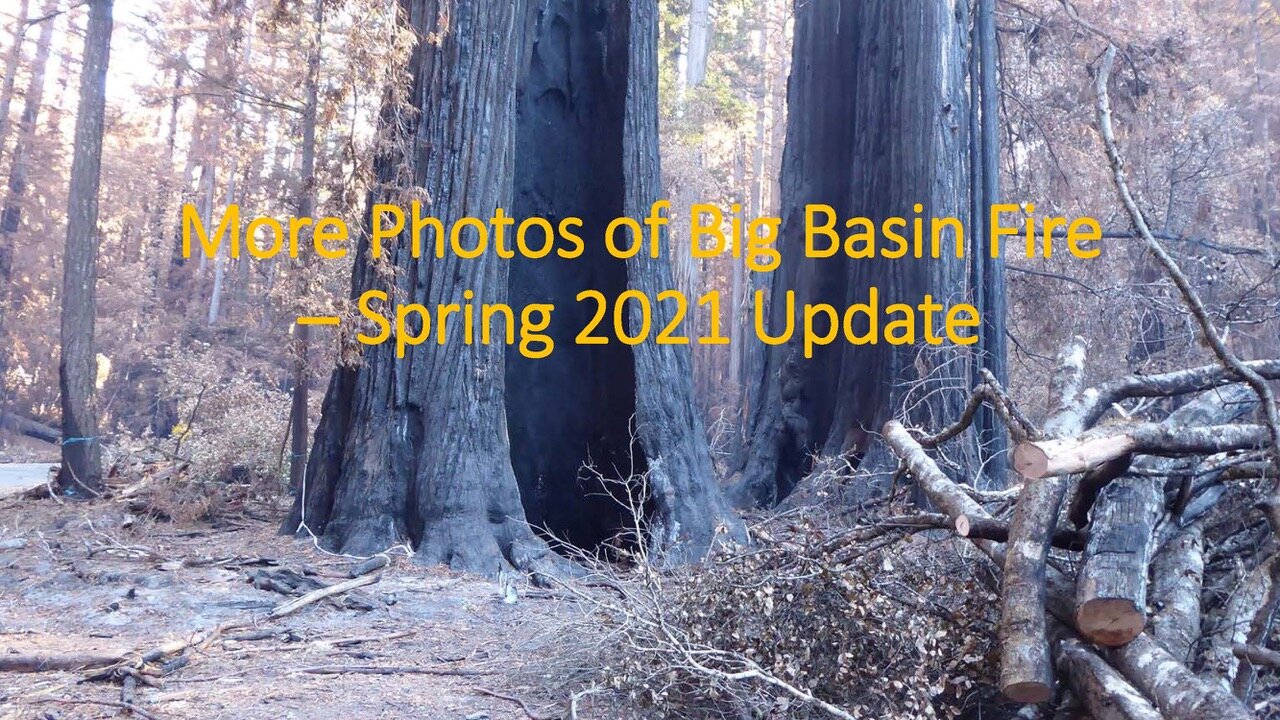Unlike many organizations that are spreading unduly optimistic information about the response of redwoods to the CZU megafire, the Santa Cruz Mountains Bioregional Council is a science-based organization and we only present the scientific facts no matter how sobering they may be. It’s not that we don’t care, it’s just that we feel any restoration efforts going forward must be science-based and must consider the full extent of damage that occurred.
I visited the park again in May taking a circuitous route from Headquarters area. I went north on Hwy 236, west on China Grade, and south on Middle Ridge Road, then east on Hihn Hammond Road, thus circling most of the “basin”. I found there to be both good news and bad news. The good news is that herbaceous vegetation on the forest floor is recovering well in many areas. The bad news is that the trees are not doing as well.
Most Douglas-firs were killed by the fire. A few survive in tiny areas of low severity burn. Except for the smallest and youngest, most redwoods have survived and have both basal and bole epicormic branch sprouts. Old-growth redwoods with the largest crowns (ie., biggest, oldest) seem to have burned more severely than other trees and a few have died, with some additional individuals likely to die soon.
Unfortunately, the on-going severe drought will hinder the recovery of sprouting redwoods of all ages. Some epicormic basal and trunk sprouts are already starting to turn brown and die. If all the sprouts die, the tree will die. This means that as summer progresses there may be more redwood mortalities.
Consider the above as tentative conclusions or as a working hypothesis that is subject to change should new information become available.
—Steve Singer, Forest Biologist, May 30, 2021










